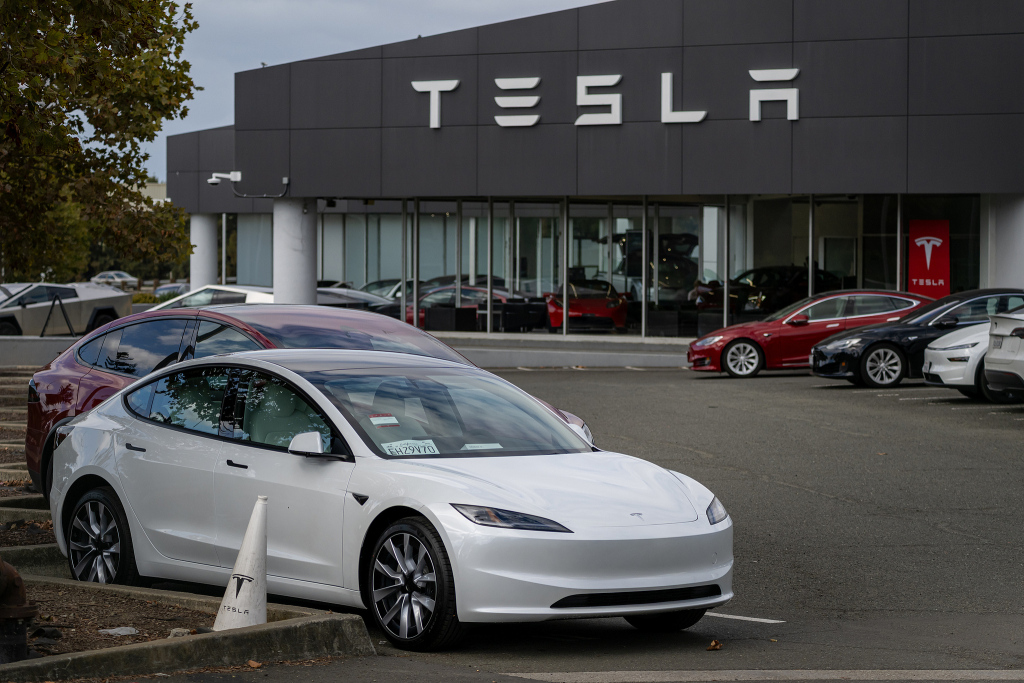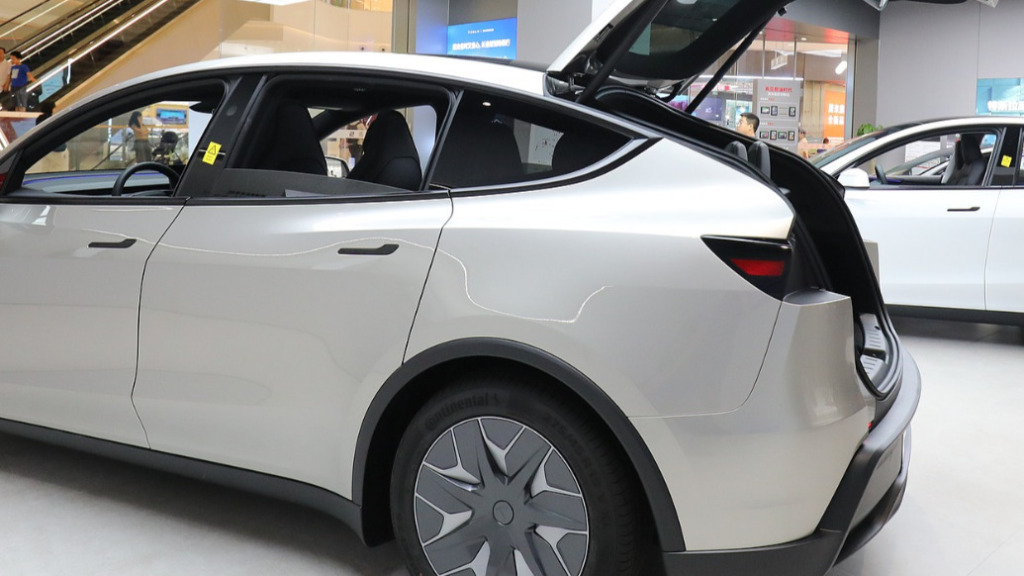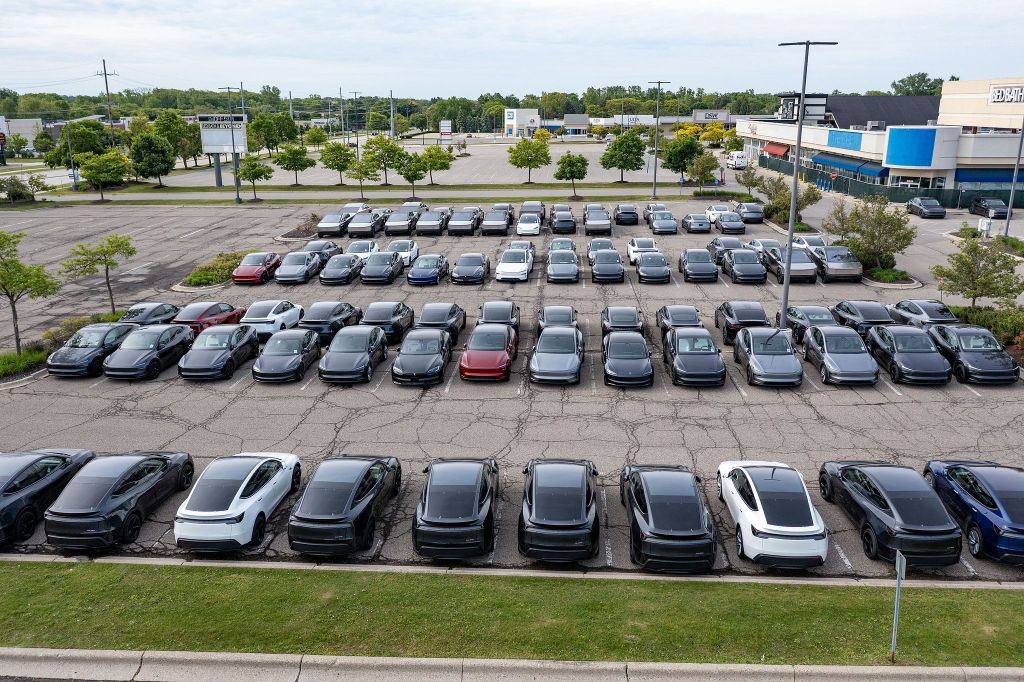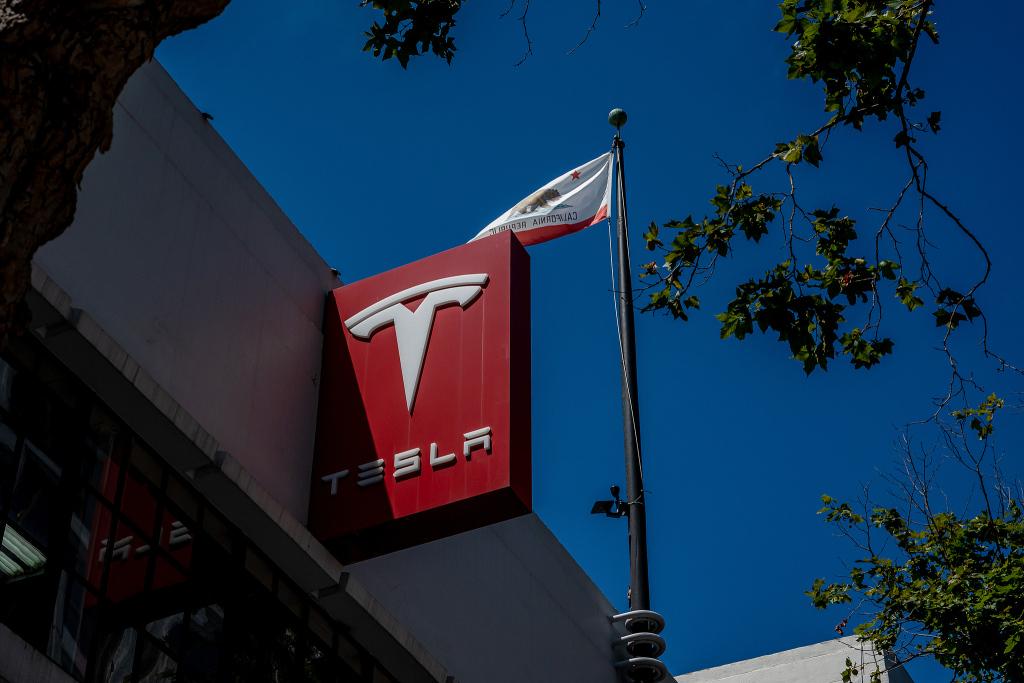
The U.S. National Highway Traffic Safety Administration said on the 9th that it will investigate 2.88 million Tesla vehicles equipped with "full self-driving" systems because it received more than 50 traffic safety violations and accident reports.

Tesla store in Vallejo, California, USA, on October 9, 2025. (Photo by Visual China)
The National Highway Traffic Safety Administration said Tesla's "full self-driving" system caused the car to "violate traffic safety laws," including running red lights and changing lanes against traffic. The agency is currently reviewing 58 related reports, including 14 accidents involving 23 injuries.
Six accident reports showed that Tesla cars using the "Full Self-Driving" system entered intersections at red lights and collided with other vehicles, four of which resulted in injuries. Other car owners complained that the "Full Self-Driving" system failed to accurately identify traffic lights or did not stop the car completely at red lights, but Tesla "did not solve the problem or even admit that there was a problem."
Tesla has not yet responded to this, but updated the relevant software this week.
According to Reuters, the current investigation is only a preliminary assessment and may require a recall if the administration determines that the vehicle poses an "unreasonable safety risk."
The agency will also review the performance of "full self-driving" systems near railroad crossings, an investigation that Senator Richard Blumenthal and others urged the agency to launch in September, citing a rise in near-collision incidents.
In October 2024, the agency launched a similar investigation into approximately 2.4 million Tesla vehicles equipped with "Full Self-Driving" systems, citing four crashes involving vehicles in low-visibility conditions.
According to Tesla's official website, the "full self-driving" system can intelligently and accurately complete driving operations under the supervision of the driver, including route navigation, steering, lane changing, parking, etc., but the currently enabled functions still require human monitoring.


